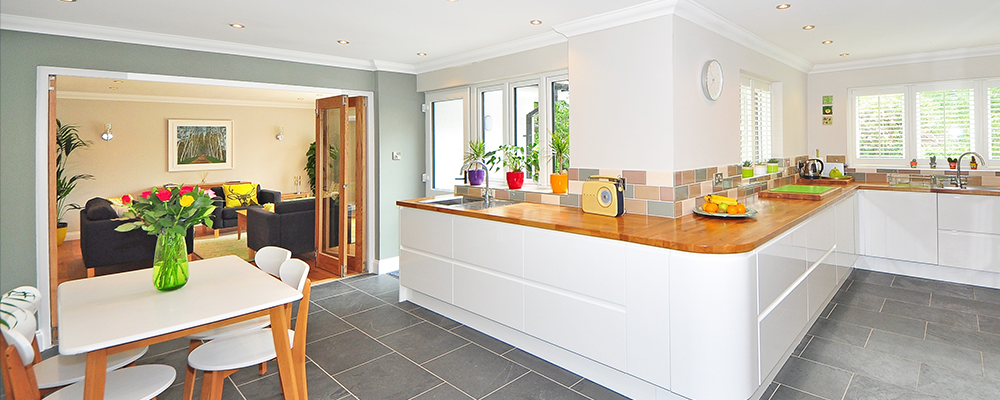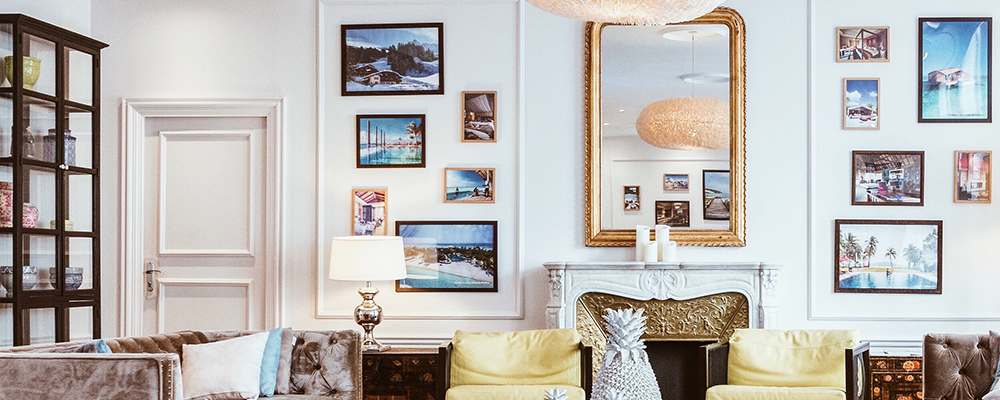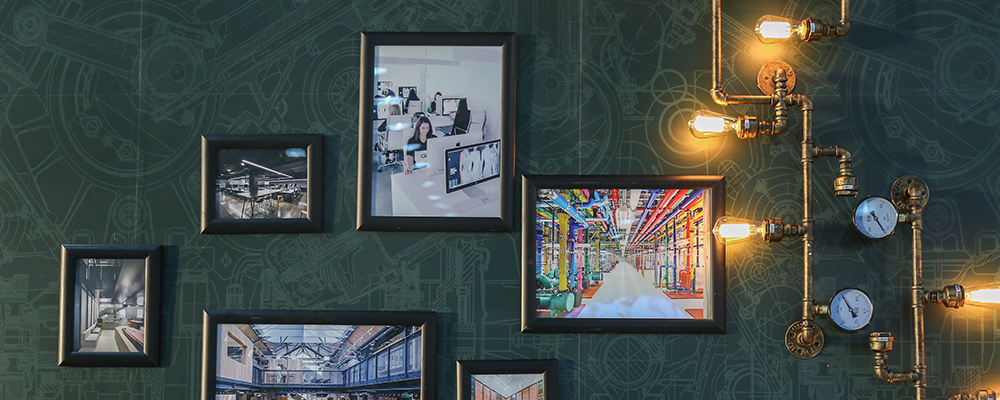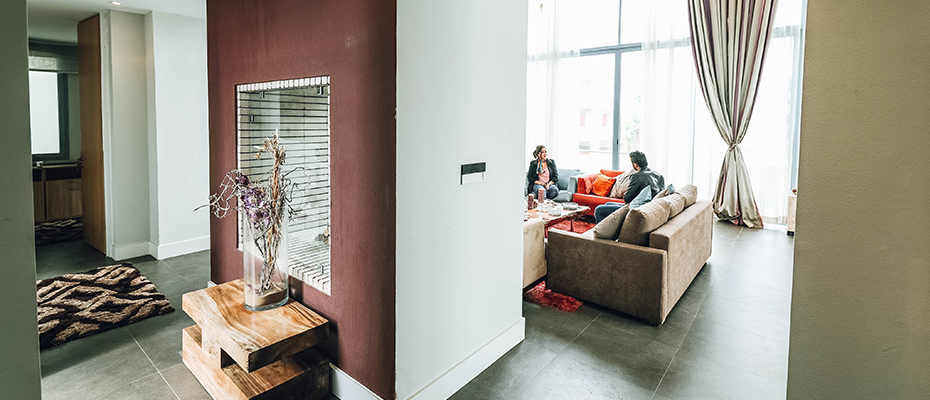Accent walls are areas in a home or room that are painted or decorated in a different color or material to compliment or contrast with the other walls. It’s common to paint all four walls in a room the same color but accent walls bring character to walls that bring out the style of the home, room, or even the owner. The purpose of an accent wall is to create visual interest and draw attention and break free from the consistency of color seen on most walls. Accent walls can really draw attention to a room and there are many different ways to accomplish the perfect accent wall to highlight a space.
Which wall should be an accent wall?
The choice of which wall to make an accent wall depends on the layout and design of the room, as well as personal preference. It can be in any room of the house where you want to highlight your space. Here are some general guidelines to consider:
- Choose a wall that is the focal point of the room. This could be the wall with a fireplace, a large window, or a piece of art or furniture that you want to highlight.
- Consider the layout of the room. An accent wall can help define a space within a larger room, such as a dining room within an open plan living room. In this case, the accent wall could be the one behind the dining table.
- Look for a wall that has no obstructions, such as doors or windows, that could detract from the impact of the accent wall. In bedrooms this might where the bed is positioned but remember to avoid locking yourself into a design if you’re frequently moving furniture.
- Choose a wall that is visible from multiple angles within the room, to maximize the impact of the accent wall. Bathrooms don’t often fit this description due to their smaller footprint, amount of wall space, or entry wall.
Ultimately, the choice of which wall to make an accent wall is a personal one, and should be based on what works best for your space and design vision.
What are the different styles and materials?
There are various styles of accent walls, materials, colors, and even decorations to consider for your space. Here are some popular styles:
Painted walls
A painted accent wall involves painting one wall in a different color than the others. This can be a bold solid colored wall, brightly colored, striped, faux finish, half-painted, or even just a subtle tone or even sheen that complements the other walls. Using a flat finish can accomplish a subtle character shift just by muting the sheen and making the wall look velvety.
Interested in getting your walls painted?
Trust the pros at Accent Painting – Denver’s best painter for over 25 years!
Half-painted
Walls that are partially painted. They don’t need to adhere to exactly half but that is often the case. Usually the wall is split with the top half painted one color and the bottom another. The differences can be bold or subtle and can even include painted paneling or wainscoting for added interest.
Solid-Color
The most common of course but even painting a wall solid can offer both subtle and bold variations to your walls. Consider bold, vibrant colors to attract attention or more subdued colors for a more relaxing feel. Of course, we can talk about the psychology of color theory and design aesthetics ALL day long but it’s best to research and find examples of combinations that fit your space and your own personal character.

Striped
In all honesty, this is one of the toughest. Not because it’s hard to accomplish for the professional painter or DIY’er but because it’s easy to make your walls look like a popcorn stand. The bolder and more pronounced your strips the more it will be harder to look at in a room. It’s best to start subtle here and see what connects with your eye and of course your home decor. However, when stripes are done right, they can be bold, chic, and interesting all in one.

Faux Finish
When we think of faux, we think types of exterior stucco. The same principles apply to interior walls also. Faux finishes can be uniform, random, destructed, or really any texture you can think of. A note here on painting faux finished walls is that your paint material can be significantly absorbed by the dry material used for texturing. It’s highly recommended to prime and evenly layer paint to get in the small depressions for a durable, long-lasting finish.
Subtle
Exactly as it sounds. Subtly in an accent wall can still be powerful. Think of subtle color variations and the strong but silent type ;). Neutral grays just a few shades off can still create an interesting change from the standard “all four walls the same” concept. One additional note, however, is not to forget your light sources be they natural sunlight or light bulb source lighting. Your subtle grays may not be as subtle as you had hoped in darker areas and the opposite in light washed areas. Check your painting area throughout the day and night if you’re unsure.

Wallpapered
These days, we often think of wallpaper as something that was a hot trend in the 60’s, 70’s, and 80’s but it’s not uncommon in modern homes and remodels. Wallpaper has stood the test of time because the patterns change with trends making otherwise complicated painting a matter of putting a giant sticker on the wall. Wallpaper can add patterns and even texture to a room, making it an excellent choice for an accent wall. There are various designs, colors, and patterns to choose from, ranging from subtle linen-like or textile designs to bolder Damask and paisley patterns that really create contrast.

Textured accent walls
Textured walls add dimension to a room and can be achieved with materials like stone, brick, or wood. This style can create a rustic or industrial look, depending on the chosen material. Don’t think of textured as just material though. Texturing walls with a knockdown, orange peel, skip trowel, sand swirl, and others can bring depth also.
Wood
Probably one one of the most common in modern construction are wood or faux wood walls. It seems that everything these days has a wood-looking surface even though in reality its tile, vinyl, or even wallpaper. Natural wood is a great choice for an accent wall. You can get creative with patterning, vertical or horizontal lines, destructed looking wood, smooth paneling, and even wine barrel slats or wood skids. Wood brings a warmth and richness that often cannot be replicated with other finishes and materials.

Stone/tile
Stone/Tile – Natural stone and tiled walls can easily offer a feeling of sitting at a cafe in old-world Tuscany or they can appear chic and minimalist with the right material.
Brick
Brick – If you’re lucky (or unlucky depending on your perspective) enough to have an exposed brick wall, you have an accent wall. Exposed brick interior walls are often found in old commercial buildings of long gone manufacturers that have been remodeled in condos, apartments, and homes. Depending on the type and location of the exposed brick, these walls can sometimes simply be lit differently with spot lighting to draw out their features and change the ambiance of a room.

Drywall compound
Compound – Wall texturing has been the staple of home walls for many years. The dreaded popcorn ceiling is part of that also but so are common textures like knockdown and orange peel. The main benefit of adding a textured wall is the ability to hide imperfections but they also bring a subtle change from the monotony of smooth or semi-smooth walls. Try a combination of texture and color to see how your wall can remain subtle but still be bold within a room.
(Note: if you’re new to these methods, practice first. Professional drywall finishers might make it look easy but they’ve had years to master their craft. It’s a learned technique through many hours of practice and trial and error to get a consistent finish)

Gallery wall
A gallery wall is exactly what it sounds like. A wall that displays art, photographs, and other wall decor in a way that looks appealing and yet cohesive to the rest of the space. Gallery walls can look amazing when they are done well so don’t shy away from this style if you have enough pieces or photos to show off.
Photo frames
Done right, this can be one of the most visually interesting and most stunning of accent walls. Scattered frames in various sizes not only offer an interesting visual element but the photos or artwork within each invites further investigation while telling a story of your personality. If you get tired of the photos or layout, simply move things around or replace the photos for a fresh new look.

Art work
The timeless, chic look of wall art is not to be overlooked. There is something serene and classy about a well lit piece of art hanging on your wall. The use of strategic spot, flood, or track lighting can further enhance your room’s appeal. Not only that, once again, this is an area to express your own unique personality. Are you an impressionist type of personality, abstract, Bauhaus design, or something more realistic like an Ansel Adams photo? The possibilities are endless with wall art.
Accent wall with shelving
Adding shelving to an accent wall can create a functional and stylish display area. The shelves can hold books, decorative items, or other objects to add interest to the room. Your choice of what to place on the shelves is endless as is how you organize shelves.
Combinations
It goes without saying that any of the above accent wall ideas can be combined into some striking displays of character. Most of us are not interior decorators but many of us like to think it’s simpler than it really is. We scour the internet looking for stunning instagram photos of accent walls and wonder “how do they do that!”. However, with some practice and a little guidance, it can be made easier and can really tie a room together.

Tips on creating an accent wall
Here are some simple do’s and don’ts of interior design concepts to consider. That said, be bold! It’s all about having fun and seeing what catches your eye and makes you happy.
Dos:
- Do consider the functionality of the space. When designing an interior space, it is important to consider how the space will be used and ensure that the layout and furniture arrangement support those functions.
- Do pay attention to lighting. Lighting can have a big impact on the overall look and feel of a space. Natural light is ideal, but artificial lighting can also be used effectively to create ambiance and highlight key areas.
- Do mix textures and patterns. Mixing textures and patterns can add interest and depth to a space. However, it’s important to ensure that the different textures and patterns complement each other and don’t clash.
- Do consider the color scheme. Color can have a powerful effect on mood and atmosphere, so it’s important to choose a color scheme that suits the purpose of the space.
- Do invest in quality pieces. When it comes to furniture and decor, quality is important. Investing in well-made, durable pieces can save money in the long run, as they are less likely to need to be replaced.
Don’ts:
- Don’t overcrowd the space. Avoid cramming too many pieces of furniture or decor into a space, as this can make it feel cluttered and overwhelming.
- Don’t neglect the importance of storage. Adequate storage is essential for keeping a space organized and clutter-free.
- Don’t forget about scale and proportion. It’s important to choose furniture and decor that is appropriately scaled for the space. Oversized or undersized pieces can throw off the balance of the room.
- Don’t ignore the architecture of the space. The architecture of a space can influence the design decisions, so it’s important to take it into consideration when planning the layout and decor.
- Don’t be afraid to take risks. While it’s important to follow some design principles, don’t be afraid to take risks and be creative with the design. A bold choice can add a unique and personal touch to a space.
Overall, there are many ways to create an accent wall in your home, and the style you choose will depend on your personal preferences and the overall design aesthetic of your space. Since the possibilities are endless, it’s best to start small and work your way by each room. Consider a theme for each room or a theme for your home in general. Either way, an accent wall in your home will be sure to attract attention how you planned it.

